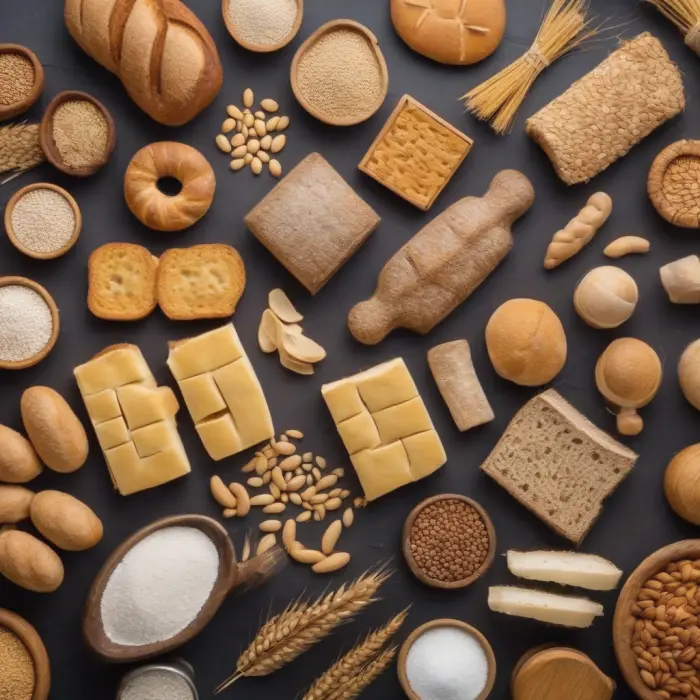What will happen if a government decides to interfere in the work of the market? In most cases, it will result in a deviation from the market equilibrium with dire consequences for the efficiency of distribution of resources. Here is an example.
A failed attempt to help poor people
Let’s assume that authorities take a decision to protect the interests of low-income citizens by setting a price cap for milk. It means that the price is established legislatively, and you aren’t allowed to sell milk at a higher price.
If this price is lower than an equilibrium price, such a state policy will lead to a shortage of milk on the market.
At a price that is set below the equilibrium one, the amount of milk buyers are ready to purchase is higher than that which sellers want to sell. Sellers supply the market with the amount of milk that is smaller than that before setting a price cap, whereas buyers want to purchase more. As a result, deficit is formed.
Buyers start to compete with each other for milk that has become rare. With a fixed price, their competition can’t spill over into a price rise for milk and consequently an increase in its quantity on the market.
However, the absence of an increase in a selling price doesn’t mean that the price of milk has remained unchanged for buyers, since competition between them requires sacrifices from those who want to get a rare product before others.
Now when they want to pick up a pack of milk, in addition to paying money for the good, they’ll have to incur additional non-cash expenses: going around a certain number of grocery shops, standing in a long line or providing a seller with a valuable service so that he puts aside a pack of milk for them.
The actual price of milk proves to be higher than both a price cap and an old equilibrium price because the amount of milk available on the market has reduced.
So, as a result of government measures, the market shifts from an efficient point to an inefficient one: too small amount of milk is produced. The resources of the society are spent on overcoming the deficit.
This raises the question: has the fixing of the price helped low-income citizens? We don’t think so.
It’s entirely likely that instead of consuming more milk, the poor will drink less of it, since its actual price will rise.
The Soviet Union and the economy of deficit
The economy of the former Soviet state perfectly demonstrates the negative effects of state interference with the operation of the market. The Soviet plan-based economy is often called the economy of deficit. In the USSR, decisions on what and how many products to manufacture as well as where those products should be supplied were taken by a central planning body, rather than private entrepreneurs.
Prices were also established centrally. Once set, the prices were revised quite rarely, since it was complicated both organizationally and politically. As a result, a price mechanism balancing supply and demand on markets for goods and services was almost absent in the Soviet Union. The growth of monetary incomes of the population led to prices for many goods becoming lower than their equilibrium market price.
Lines and empty shelves became a norm of life. It took a lot of time, including working hours, for people to find a desired product and stand in line in order to buy it. Not being able to find scarce products such as sausages in their area, people organized trips to the capital city of Moscow with a view to buy the desired product.
Having arrived there, the Soviet citizens bought as many sausages as they could carry. A portion of those products spoiled on the way back home. If the people weren’t able to purchase what they wanted to get, they bought what was available on the market, thereby increasing a shortage of other goods.
That’s why it often happened that with the complete absence of foodstuffs in grocery stores, the homes of people were chock-full of bed linens, fabrics and dinner sets bought just in case, and in the hallways of their apartments, spare refrigerators, which had been bought occasionally, could be stored.
When the goods disappeared from the market, they reemerged on the black market at completely different prices.
In the early 1980’s, a fall in oil prices, the most important export article, adversely affected the country’s possibility to procure the previous quantity of import goods. The supply of many products further decreased. By the mid-1980’s, there was a shortage of almost everything. In order to provide the population with the minimum of required goods, food stamps were introduced for the first time since World War II.
Economic difficulties caused political unrest, whereby the Soviet Union ceased to exist in 1991. The task of saving people from hunger and an economic collapse in the countries formed on the territory of the USSR fell on the shoulders of their national governments.
The first market reform undertaken by the government of independent Russia was price liberalization, that is, refusal to regulate prices for the majority of goods and services. Thus, it was market forces that were entrusted to solve the problem of the deficit, which Soviet planners had never been able to cope with.
As you can see, the market forces came through. In a matter of months, Russian stores were filled with products. The abundance of goods that we can see on store shelves nowadays is largely a consequence of the fact that prices were given the opportunity to balance supply and demand.
That’s pretty much all we wanted to tell you about what happens when a government meddles in the work of a market. We hope that now it’s clear to you that it’s not the greatest idea.
Powered by Froala Editor










